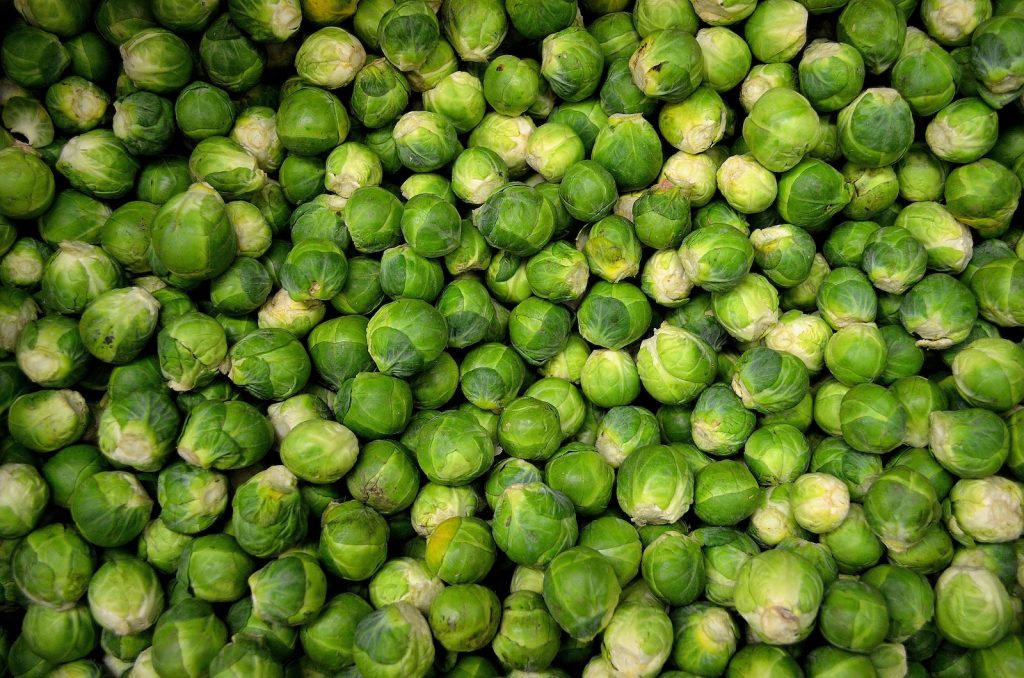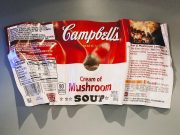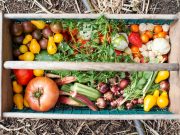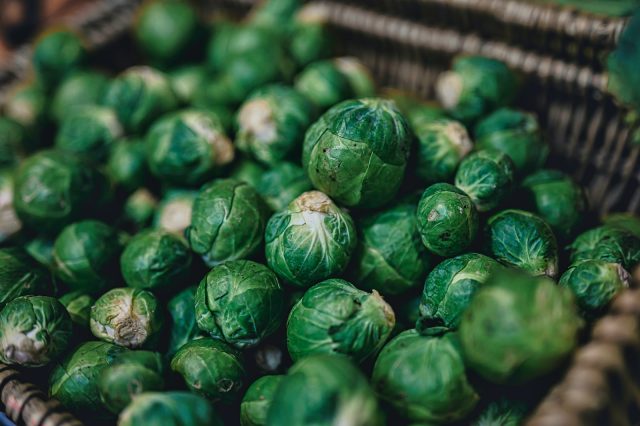Why grow Brussels Sprouts?
Brussels sprouts are an incredibly nutritious vegetable packed with vitamins and minerals. Not only are they good for you, but they are also incredibly easy to grow and require very little effort. Many people may be intimidated by growing Brussels sprouts, but with a few simple steps, even a beginner gardener can have success! Here’s why you should start growing Brussels sprouts today:
First, Brussels sprouts come in a variety of shapes and colors. From the classic green to purple or white varieties, the possibilities for creative culinary experiments are virtually endless. In addition, these versatile veggies can be harvested year-round – from late summer through winter – making them an excellent choice for all kinds of recipes.
Second, Brussels sprouts offer numerous health benefits.
The best time to plant Brussels Sprouts
Brussels sprouts are a nutritious vegetable that is commonly eaten and enjoyed by many people. When planted correctly, Brussels sprouts can yield a bountiful harvest of tasty vegetables. Knowing the best time to plant Brussels sprouts is key to achieving success in your garden. The ideal time of year to plant Brussels sprouts is in early spring, usually late March or early April. This allows the plants plenty of time to become established before any hot weather arrives. Planting later in the season will require extra care with regard to watering and shading during times of intense heat.
Before planting, ensure that the soil temperature is above 50 degrees Fahrenheit, as this will help stimulate germination and enhance root development. In addition, add compost or aged manure into the soil for enhanced nutrition and moisture retention, which helps promote healthy growth throughout the season.
Sunlight: how much sun does Brussels Sprouts need?
The Brussels sprout is a popular vegetable that can be cultivated in many climates around the world, but it does require some special attention when it comes to sun exposure. Knowing how much sun your Brussels sprouts need is key to growing healthy and successful plants.
In general, Brussels sprouts need around six hours of direct sunlight each day in order to produce strong and healthy stalks. If you live in an area with particularly hot summers, then you may need to provide shade for the plants during the hottest part of the day. During the winter months, when there isn’t as much sunlight available, supplement with artificial lighting so that plants get enough light throughout their entire growth cycle.
By following these tips on sunlight needs for your Brussels sprouts, you will be well on your way to harvesting a bountiful crop of this nutritious vegetable.
Temperature: what temperature range is best for Brussels Sprouts?
Brussels sprouts are an extremely nutritious vegetable that can be grown in a variety of climates. However, for Brussels sprouts to flourish and produce the best flavor and quality, it is important to understand which temperatures will work best for them. In this article, we’ll explain what temperature range works best for growing delicious Brussels sprouts so you can get the most out of your garden.
The ideal temperature range for growing Brussels sprouts is between 45-85 degrees Fahrenheit (7-30 degrees Celsius). This range allows the plant to grow properly without suffering from cold or heat stress, allowing optimal production of flavorful Brussels sprouts. It’s important to note that even within this temperature range, there are differences in ideal temperatures depending on what growth stage the plant is currently in; with lower temperatures being preferable during vegetative growth and higher temperatures during flowering and fruiting stages.
Where to plant Brussels Sprouts?
When it comes to planting Brussels sprouts, the location you choose is of utmost importance. These hearty vegetables need full sun and nutrient-rich soil in order to thrive. Knowing what kind of environment you can provide for your Brussels sprouts is key when making the decision on where to plant them.
When deciding where to plant your Brussels sprouts, make sure the area gets at least six hours of direct sunlight every day and that it’s well-drained. If not, then they may rot or be susceptible to disease due to being waterlogged. Additionally, if you are planting them in a container or raised bed, use quality compost-enriched potting soil and give them plenty of room for their roots to expand as each stalk grows upwards. By providing these ideal conditions for growth, your Brussels sprouts will reach their full potential!
Pots: what size pots are best for Brussels Sprouts?
When it comes to gardening, the right pot can make all the difference for your Brussels sprouts. Whether you’re just starting out or you have been growing them for years, there are several factors to consider when selecting the optimal pot size for this vegetable.
The ideal container should be able to accommodate a generous amount of soil and allow plenty of room for growth. When considering different pots, look at their capacity in gallons rather than their physical dimensions – it is important to remember that larger pots tend to dry out more quickly and require more water and fertilizer. Additionally, ceramic or plastic containers with drainage holes will ensure excess moisture won’t remain stagnant in the soil, which can lead to root rot or other problems.
Soil: what type of soil is best for Brussels Sprouts?
Soil is an important factor to consider when growing Brussels sprouts, as it affects the quality of the plant’s growth. The best soil for Brussels sprouts is well-drained, loam-based soil with high levels of organic matter. This type of soil will provide the adequate drainage and nutrients that are necessary for strong and healthy plants. For this reason, a combination of the garden or potting soil with composted manure or other organic material should be used to create an ideal environment for Brussels sprouts to thrive. Additionally, pH levels should be between 6.0 and 7.5 in order to ensure optimal nutrient uptake from the soil by the plants’ roots. With these factors in mind, farmers and home gardeners alike can reap the rewards of successful Brussels sprout crops!
How to plant Brussels Sprouts?
Growing Brussels Sprouts can be a rewarding experience for any gardener. With the right knowledge and a few helpful tips, you can produce delicious sprouts with ease. This beginner’s guide will provide you with the essential steps to ensure your Brussels Sprouts thrive in your garden this season.
The first step is to choose an appropriate location for planting Brussels Sprouts. They require full sun or partial shade and need well-drained soil that is rich in organic material such as composted manure or peat moss. Make sure to give them enough space so they can spread out their roots and get plenty of air circulation as they grow.
Next, prepare the soil by digging it up to a depth of 8-10 inches and removing all weeds, rocks, or debris that may limit root growth.
Watering Brussels Sprouts
Watering Brussels sprouts is an essential part of nurturing these hearty vegetables. Though it can seem daunting to the beginner gardener, with a few simple tips and tricks, you’ll be able to keep your Brussels sprouts hydrated and healthy.
The most important thing to remember when watering Brussels sprouts is that they need a lot of water. Watering them every day or two in times of hot weather is ideal, as this will help prevent the soil from drying out. When watering the plants, make sure to water them at the base near their roots; otherwise, you may end up washing away all the nutrients around them. Additionally, using a soaker hose rather than sprinklers can be beneficial; not only does this ensure that your Brussels sprouts get enough water without getting too wet, but it also helps conserve water.
Fertilizing Brussels Sprouts
Brussels sprouts are a beloved vegetable packed with many nutritional benefits. If you’re looking to grow your own at home, there are a few things to keep in mind when it comes to fertilizing. Nurturing your Brussels sprouts is key for growing thriving plants. In this beginner’s guide, we’ll look at why fertilizing is important and the best methods for doing so.
Fertilizing your Brussels sprouts will ensure that they have enough nutrients and minerals to grow properly. The type of fertilizer you use will depend on the time of year and soil quality. During the summer months, using an organic fertilizer or manure-based fertilizer will give them all the nutrients they need for growth. In colder months, adding phosphorus-rich fertilizer can help protect them against frost damage, as well as improve their flavor and texture come harvest time.
Pruning Brussels Sprouts
Brussels sprouts are a delicious, nutritious vegetable that can be grown in many climates. Pruning Brussels sprouts is an important part of the growing process and requires careful attention to detail. Knowing when and how to prune your Brussels sprouts will help you maximize your growth potential and achieve the best possible harvest.
Pruning helps remove excess leaves, which helps reduce disease and pest problems while promoting air circulation among plants. Additionally, it encourages the plant to grow upwards instead of outwards, allowing it to reach its full height potential. Pruning should be done when plants are still young; once they start developing buds, wait until after harvest before pruning again. When pruning your Brussels sprouts, you’ll want to remove any side shoots or suckers from the main stem as well as dead or diseased leaves near the base of the plant.
Harvesting: when and how to harvest Brussels Sprouts?
Harvesting Brussels sprouts can bring a sense of satisfaction and accomplishment, but it is important to know when and how to pick them. For beginner gardeners, harvesting Brussels Sprouts can feel daunting; however, with the right tips and tricks it can be done easily and with confidence. To ensure a successful harvest, one should understand the optimal time for picking the vegetable as well as the best way to cut them off their stalk.
The ideal time for harvesting Brussels sprouts is once they are firm and firm-green in color on each individual bud. When harvested too early, they will have a bitter taste. It’s also important not to let them become overripe or yellow – an indication that they are past their prime. The best way to harvest is by cutting each sprout individually from the base of its stem using either pruning shears or a knife.

Troubleshooting common problems with Brussels Sprouts
Troubleshooting common problems with Brussels sprouts can be a challenge for beginner gardeners. However, with some simple tips and tricks, you can help ensure your Brussels sprouts are healthy and of the highest quality. Many problems related to Brussels sprouts arise from incorrect soil pH levels, improper watering schedules, or too much exposure to direct sunlight. Here are some tips on how to diagnose and address potential issues so you can get the most out of your Brussels sprouts this season.
First, check the pH levels in your soil; ideal pH levels for growing Brussels sprouts range from 6-7.5. If your soil is too acidic or alkaline, it will affect the growth rate of your plants and may also lead to nutrient deficiencies in the leaves and stems.






























